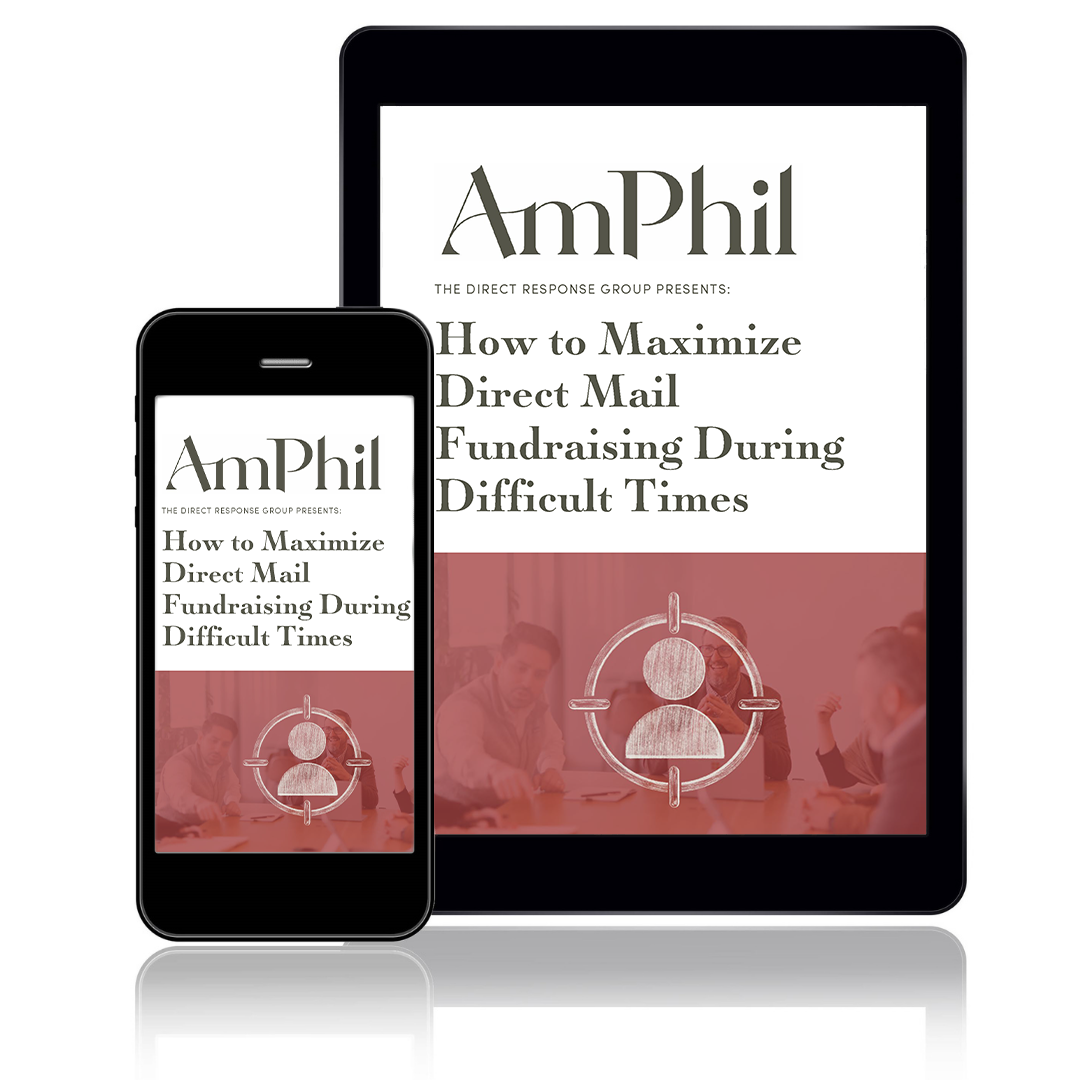
Your nonprofit’s donor database can make or break your development program. Good fundraising software can be the difference between a successful fundraising program run by happy staff and a disjointed program run by stressed-out worker bees.
Here’s why finding the right fundraising software matters for your nonprofit:
Intuitive fundraising software allows you to run a smart, integrated fundraising program.
Most modern nonprofits run complex fundraising programs. Even small organizations generally host one or more fundraising events, send out multiple fundraising mailings, raise money online, and engage in face-to-face fundraising with their major donors. Mid-sized and large organizations add to that complexity by adding other fundraising tactics, as well as employing multiple team members to implement their fundraising plans.
With all of that activity, it can be hard to track donor communications and analyze how different donors respond to each of the different strategies you are using. Good fundraising software makes this much easier by providing a central repository for your development data. The right software solution will allow everyone on your team to have instant access to your donor data, as well as information on where each donor and prospect is in the fundraising process. Likewise, your fundraising software will enable your team to analyze and report on each of your fundraising tactics immediately.
Simply put, a good donor database will allow your nonprofit to run an integrated fundraising program that maximizes efficiency and enables better decision-making.
The right CRM software makes donor cultivation easier and more effective.
Your nonprofit likely communicates with donors in several different ways: through in-person meetings, phone calls, cultivation events, snail mail, e-mail newsletters, written fundraising appeals, and more. Without good fundraising software, it can be extremely hard to communicate with your donors effectively.
Most fundraising software allows you to print up donor thank you letters and fundraising appeals (both e-mail and snail mail) right from within the system. Likewise, your software tracks who receives what, so that you’ll know which donors received each appeal letter, which donors received your newsletters, and which donors were invited to or attended each of your fundraising events. This makes your donor cultivation process easier and more effective by allowing you to communicate with different segments, track donors through your fundraising funnel, and instantly see team member notes from in-person meetings and phone calls.
Powerful fundraising software allows you to do more with less.
Most nonprofits are short on resources. Rare is the organization that has enough time, budget, and staff to do everything it wants to do to raise money. When your fundraising program is disjointed, this problem is exacerbated. Nonprofits that are duplicating work or focusing on strategies with a low return on investment are likely to raise far less than they otherwise would, and to do so with more stress and hassle than necessary.
Good fundraising software allows your development team to do more with less by ensuring donor information is at everyone’s fingertips. Instead of having to search through Excel files or review copies of mailing lists by hand, your team can immediately get the information they need to do their jobs effectively.
Even better, your donor database allows you to focus your time and resources on fundraising strategies that are working well for your nonprofit. You can run reports that analyze the return on your investments of time, money, and other resources for each of your fundraising strategies and know with certainty which fundraising tactics to focus on, and which to phase out. Good fundraising software enables your organization to implement the effortlessly implement the 80/20 rule and put your resources to work where they will make the biggest difference for your nonprofit.
Effective fundraising software makes it easier to run successful events, send out profitable appeal letters, and launch successful fundraising campaigns.
Your nonprofit’s fundraising software touches every aspect of your development program. Good software makes it easier to run successful fundraising events by allowing you to slice and dice invitation lists, track event ticket sales and auction items, and communicate with your attendees after the event.
Likewise, a good donor database is an invaluable tool for sending out snail mail and e-mail appeal letters, allowing you to create letters, labels, and envelopes for smaller mailings (or segmented mailing lists for larger mailings that are being outsourced). Your software solution also helps with A/B testing various letter elements and analyzing the return on investment of your mailings.
Finally, your software system is a great means for coordinating each of your fundraising campaigns, including annual, endowment, capital, and planned giving efforts. Good fundraising software will help you identify prospects for each of your campaigns, track donors through the funnel, and steward your campaign donors once they make a gift.
Donor management software lets you see what’s working… and what’s not.
Sometimes, it can be hard to know exactly what is working (and what’s not) in your fund development program. When board or staff members suggest a new fundraising event, campaign, or mailing, it is important to know whether other similar strategies have worked for your organization in the past. As mentioned above, with limited resources, your organization can’t afford to plow time or money into tactics that aren’t producing results.
With its ability to segment donors and tactics, analyze data, and run out-of-the-box and custom reports, good fundraising software makes evaluating the effectiveness and return on investment for your various fundraising campaigns and strategies easy. This is one of the most important benefits of good fundraising software: it lets you know what’s working, and what isn’t so that you can make smart decisions about your development program.
How to Evaluate Fundraising Software Options for Your Nonprofit
As you search for a donor database for your nonprofit, it is important to compare the needs of your nonprofit with the unique capabilities of each of the software packages available within your budget range. Here are the key things to consider when evaluating software options for your nonprofit:
1. Functional Requirements
What functional capabilities do you need from your fundraising software? What type of donor relationship tracking would you like to perform? What type of searches do you need to be able to do? Do you need modules for event management, planned giving, or capital campaigns? Do you need software that can send out direct mail and e-mail newsletters right from inside the database? What about credit card processing, online giving, and peer-to-peer fundraising capabilities?
2. Reporting Capabilities
What types of fundraising reports do you most commonly use at your nonprofit? What “out of the box” reports do you need? How often do you create custom report templates?
3. Resource & Technical Requirements
What type of computer system does your nonprofit utilize? What are the IT requirements you have for your donor database system? Do you want your fundraising software to be based on your servers, or in the cloud? Will you be accessing your software away from the office, on laptops, tablets, or mobile phones?
4. Training and Support
Every fundraising software package has a learning curve. How much time do you have available for training on your new system? How would you prefer to be trained, in person, through video conferencing, online video tutorials, or through a written manual? Do you want 24/7 support access? What type of support would you prefer (phone, chat, e-mail, etc.)?
5. Data Security
What type of data security options would you like in your new software package? (This is especially important if you plan to use a cloud-based solution and/or run credit cards from within your database package). Who will have access to your data? What types of backups will you need to do in case of data loss?
6. Timeframe
What is your timeframe for evaluating and implementing a new donor database package?
7. Budget
What is your organization’s budget range for fundraising software? What is your budget for annual, ongoing software support and maintenance?
Think through the answers to each of these questions before you start looking at individual software packages. Be sure to label each of the features you are looking for as either “must have,” or “nice to have.” Use the answers to these questions to guide your evaluation of the dozens of fundraising software systems available to your nonprofit.
8. The Importance of Evaluating Your Software’s ROI
From the beginning of your search for the right fundraising software for your nonprofit, one of your key considerations should be the return on your investment from this purchase.
Many nonprofits are understandably frugal when it comes to investing in administrative infrastructure. Your donor database should not be considered in the same light as your general “overhead” expenses, however. Your donor database system has a direct impact on your ability to raise money and fund your work. For that reason, nonprofits should consider their fundraising software as an investment in future fundraising revenue.
How much more will your nonprofit be able to raise due to a new software package? Most nonprofits would gladly spend $1,000 on a fundraising mailing if they knew it would raise an extra $25,000 for their organization. Use the same calculus when determining the benefits of a new piece of fundraising software. If your current software isn’t doing everything you need it to do, and you could raise an extra $100,000 per year by using new software, wouldn’t it be worth an investment of $5,000, $10,000, or even $25,000 to make that happen?
Look closely at the ROI of your donor database solution, and remember that your software purchase is an investment into your future fundraising success.


